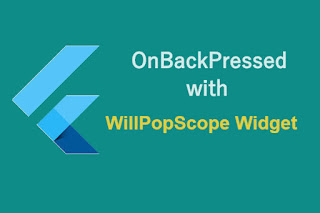As we know, mobile having a small screen to display content. That why most apps contain several screens to display different types of information.
Example: We might have a screen that shows products. Our users could then tap on a product to get more information about it on a new screen. In that case, a user will move on another screen of the app. When a user navigates to application screens. Sometimes we need to handle device back press event like:
1. We want to show a pop-up before the close app or close some connection that app using.
2. You can ask the user to confirm that they want to discard their changes when they tap the back button or back navigation arrow.
Example: We might have a screen that shows products. Our users could then tap on a product to get more information about it on a new screen. In that case, a user will move on another screen of the app. When a user navigates to application screens. Sometimes we need to handle device back press event like:
1. We want to show a pop-up before the close app or close some connection that app using.
2. You can ask the user to confirm that they want to discard their changes when they tap the back button or back navigation arrow.


















